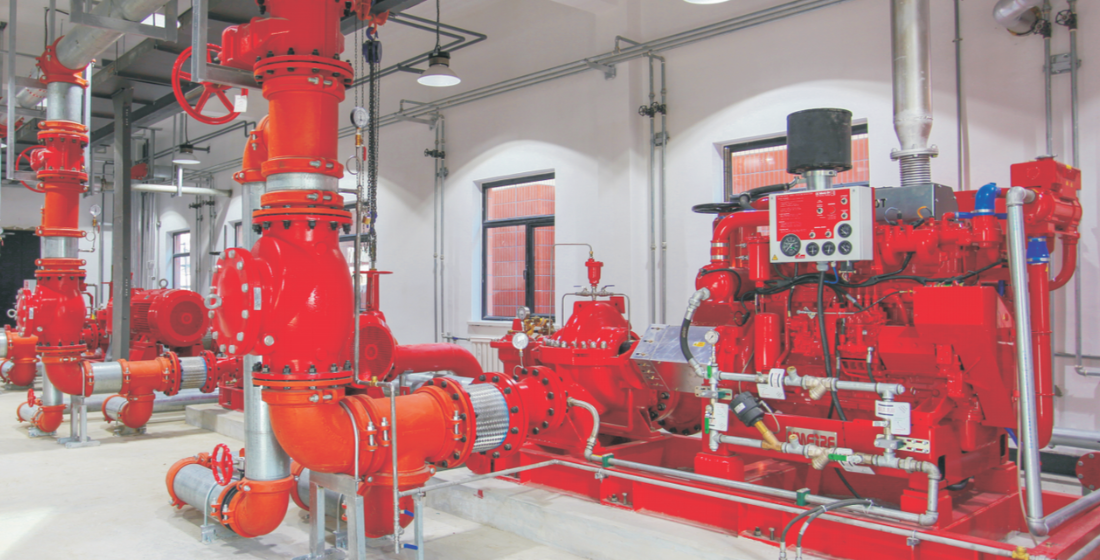When Can a Fire Pump Be Deleted
Fire pumps play a crucial role in fire protection systems, providing water pressure for sprinkler systems, hydrants, and standpipes. When the municipal water supply is insufficient or unavailable. However, there are certain circumstances where the need for a fire pump can be re-evaluated, and in some cases, it may be possible to delete or remove it from the system altogether. This decision can have significant implications for building safety, insurance, and code compliance. Understanding when and why a fire pump can be deleted requires an in-depth look at several factors, including system requirements, water supply availability, code requirements, and the nature of the building.
Availability of Adequate Water Supply
One of the main reasons for having a fire pump is to supplement a lack of water supply. Fire pumps are generally employed when the city water system is incapable of delivering sufficient pressure or volume to protect a building from fire. If, as time goes on, the water facility is upgraded or the building is tied into a more dependable or greater-capacity water supply, the necessity for a fire pump is no longer present.
In such situations, a fire pump may be eliminated, as long as the new water supply is capable of delivering the necessary pressure and flow requirements. For instance, if the local water company upgrades to a service that offers sufficient pressure, or when a building converts to a more constant water source, like a local reservoir or well, a fire pump could become obsolete. It should be tested to ensure that the water supply is in accordance with the National Fire Protection Association (NFPA) standards or local building codes before the removal of the pump.
Compliance with Fire Protection Codes and Standards
Fire protection regulations like those of the NFPA, International Fire Code (IFC), or municipal codes have a significant impact on whether a fire pump can be deleted. These regulations prescribe minimum standards for fire protection systems depending on building type, occupancy classification, or location.
A fire pump can be removed if no longer needed by the building’s fire protection classification.
For example, some low-hazard buildings might not require a stand-alone fire pump if the water supply is sufficient or the building’s fire protection system can function well with the existing water pressure. Yet, any modifications to fire protection systems shall be approved by local fire authorities or a fire protection engineer to allow compliance with the existing building codes.
Redesign or Renovation of the Building
Occasionally, fire pumps are located within older structures designed prior to the current building and fire codes being implemented. As building codes change over time, the fire protection requirements of buildings can likewise shift. If a building is extensively renovated or redesigned, fire protection systems could be modified to keep up with the changes.
For instance, if the building is renovated to be improved in terms of fire compartmentalization or if a more effective fire suppression system is installed, the fire pump would no longer be necessary.
New sprinkler systems or fire suppression systems might be designed to function well using the current water supply and without the need for a booster pump. In those instances, it is possible to eliminate the fire pump to streamline the system and lower maintenance expenses if it meets newer codes.
Advanced Fire Suppression Technology
With advancing technology in fire suppression, more recent systems are more efficient and do not necessarily use fire pumps as a source of water supply. For example, in certain situations, sophisticated pre-action systems, foam-based systems, or other fire suppression systems may be capable of operating effectively without the use of a fire pump. Such systems have underlying features to provide adequate water pressure and flow without additional pumps, enabling the possibility of completely removing the fire pumps from the system.
Similarly, if a building is converted into another type of fire suppression system, which does not require a high-pressure water supply, such as a clean agent system or a dry pipe sprinkler system, the need for a traditional fire pump can be eliminated.
Cost Considerations
From the cost point of view, having a fire pump involves both initial and recurring expenses such as installation, regular maintenance, inspection, and repair. In the event that a fire pump is not required in case of improvement in water supply, the fire security system of a building, or progress in fire suppression technology, eliminating the fire pump can provide wide cost savings in the future.
For tight budget buildings or where the cost of operation is a major issue, getting rid of a non-essential fire pump is an option that can be very attractive. Nevertheless, it should always be weighed against ensuring that the fire security system is still working and meets fire code and safety requirements.
Conclusion
In summary, the decision to delete a fire pump from a building’s fire protection system should not be taken lightly. Several factors must be considered, including the adequacy of the water supply, compliance with current fire codes, any changes in building design, and the potential for new or more efficient fire suppression technologies. Ultimately, a fire pump can be deleted when it is no longer required to meet fire protection needs, provided that the system remains compliant with applicable safety standards and regulations. Consulting with a fire protection engineer and local authorities is essential to ensure that the building remains safe, compliant, and adequately protected against fire hazards.
Whether you’re evaluating the necessity of a fire pump, planning a system redesign, or navigating compliance with updated fire codes, our team at DEC MEP Design is here to help. With decades of experience in MEP-FP design and consulting, we provide trusted expertise tailored to your project’s unique requirements.
How to Determine if a Fire Pump Can Be Deleted
- Evaluate the Water Supply Capacity
Engage a licensed MEP or fire protection engineer to perform hydraulic calculations and on-site testing to assess whether your municipal or private water source meets the required flow and pressure for fire protection systems (as per NFPA 20 and local codes).
- Review Building Classification and Occupancy
Check whether your building’s current use or occupancy classification requires a fire pump. This includes reviewing the building’s fire risk, sprinkler demand, and fire code obligations.
- Conduct a System Redesign Assessment
If the building is undergoing renovations or a fire protection system upgrade, determine if new systems (e.g., low-pressure sprinkler heads, compartmentalization) can operate without the support of a fire pump
- Confirm Compliance with Codes and Authorities
Verify that removing the fire pump complies with NFPA standards, local fire marshal regulations, and insurance requirements. Obtain all necessary approvals and documentation from the Authority Having Jurisdiction (AHJ).
- Plan and Execute Safe Decommissioning
If all checks pass, prepare a professional decommissioning plan. This includes draining the system (if necessary), disconnecting utilities, and removing or repurposing fire pump components in accordance with safety protocols.
Frequently Asked Questions
The local Authority Having Jurisdiction (AHJ), typically the fire marshal or building code enforcement official, must review and approve the removal. A licensed fire protection engineer should also be consulted.
Not necessarily. Even underused or vacant buildings must meet fire code requirements. The pump can only be deleted if alternative systems meet all pressure and flow needs and local codes allow it.
It depends. While maintenance costs may drop, insurance companies may require a reassessment of your building’s fire risk. Work with your insurer to understand how system changes affect your premiums.
No. Water supply must meet both peak flow and sustained pressure under worst-case fire scenarios. A fire protection engineer must certify the adequacy of the supply under all conditions before a pump is removed.
Removing a fire pump prematurely can lead to system failure during a fire event, code violations, increased liability, project delays, and higher long-term costs. Always proceed with expert review and full documentation.
Yes. If full deletion isn’t feasible, consider downsizing, converting to a standby system, or upgrading to more efficient pumps that better match current demand and code requirements.





No comment